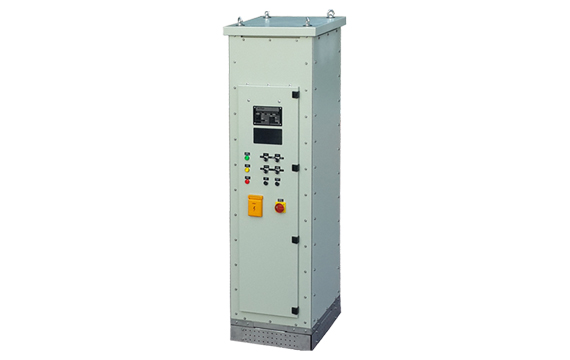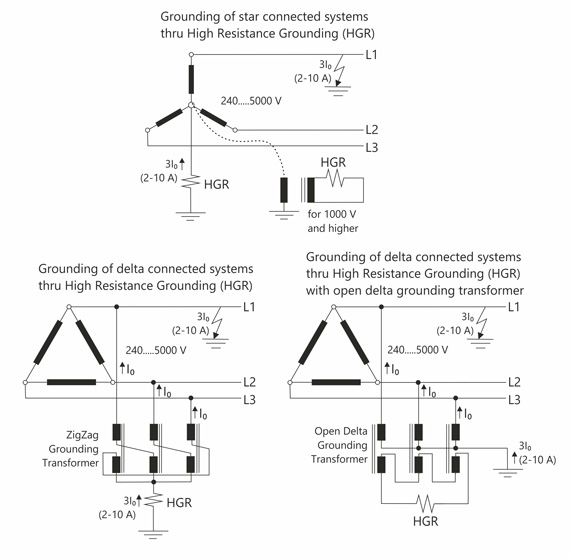The design and operation of 240-5000 V systems, service continuity, personnel and equipment safety are the most important aspects in industrial systems. The use of the high-resistance grounded (HRG) system can provide a safe, reliable and economic system for 240-5000 V networks.

HRG systems limit the fault current by placing high resistance between neutral point of transformer (or generator) and ground. As it is not possible to locate the fault point in delta connected systems, an artificial neutral point is created and delta connected system can be grounded. This allows a fault current of a few amperes thus locating the fault point gets easy. When the neutral point is grounded thru high resistance, both continuity of operation is provided during fault condition and sufficient current (typically between 2 A and 10 A) flow is provided for ease of locating the fault point.
Approximate phase to earth fault current in 240-5000 V networks are:
- Solidly grounded systems : 1000-6000 A
- Low resistance grounded systems: 100-1000 A
- High resistance grounded systems: 2-10 A
- Ungrounded (or delta) cable system: 0.3-2.8 A/km: 2-10 A





